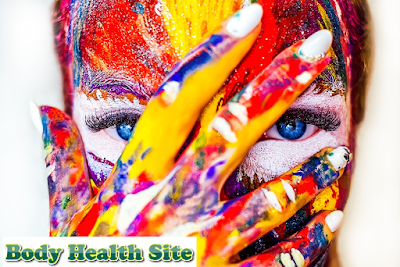Cosmetic Basic Material is Chemical, So It Can Be Dangerous
Cosmetic Basic Material is Chemical So It Can Be Dangerous. A woman's life can not be separated from cosmetics. In addition, to beautify themselves, cosmetics are also used for health purposes, ranging from acne, protecting the skin from the harmful effects of sunlight, hydrating and nourishing the skin, against signs of aging, and so on. Even so, a woman who prioritizes beauty and health must also understand the ingredients of cosmetic equipment she uses.
Consumers are often troubled in choosing cosmetics that are healthy for the skin because of the claim of beauty products with natural or organic-based labels. Do not be mistaken, just because such a label does not mean that the content of the product is healthy and as safe as advertised. Plus, many cosmetics are on the market without having permission from the Food and Drug Supervisory Agency. Therefore, it is important for consumers to proactively seek information content in order to be able to choose the right product.
Beware of toxic chemicals in various cosmetics that can invite health hazards. Here is a row of banned substances.
- Vinyl chloride.
- Methylene chloride.
- Chloroform.
- Chlorofluorocarbon propellant.
- The complex zirconium content.
- Bithionol.
- Halogenated salicilanilides (disalisilanilida, trisalisilanilida, tetraklorosalisilanilida, and metabromsalan).
Meanwhile, chemicals that can still be used, but must be tightly restricted, including mercury content, sunscreen in the cosmetic, and hexachlorophene. A leading environmental research organization in the United States that focuses on educating consumers about ingredients in body care products, recommends avoiding some of the following chemicals.
- hydroquinone
- Coal tar on hair dye or other coal tar material (eg, aminophenol, diaminobenzene, and phenylenediamine)
- Formaldehyde
- Benzalkonium chloride
- triclosan & triclocarban
- parabens (propyl, isopropyl, butyl, and isobutyl)
- Butylated hydroxyanisole (BHA)
- MDM hydantoin & bronopol
- methylisothiazolinone and methylchloroisothiazolinone
- oxybenzone
- PEG / ceteareth / polyethylene compounds
- petroleum distillate
- phthalates
- resorcinol
- retinyl palmitate and retinol (vitamin A)
In addition to the above materials, you are also encouraged to pay attention to other unsafe cosmetic ingredients, such as fragrances and preservatives, as well as considering the safety of product packaging so you can make wiser choices for yourself.
Fragrances
The smell or fragrance contained in cosmetics is not really the main ingredient. However, many body care products on the market with a certain fragrance or in other words contain fragrance. In fact, chemical fragrance makers often cause allergic reactions. It's a good idea to consider avoiding products with fragrance labels.
Preservatives
Supplemental preservatives in beauty care products should also be of particular concern to consumers. In general, preservatives are used to kill bacteria and prolong the life of the product. However, preservatives can irritate the skin or cause allergic reactions, and often create an aroma that some people dislike.
Packaging
Choose safe and airtight packaging because packaging such as this makes bacteria cannot reproduce. Meanwhile, unopened packaging or jar packaging with open mouth may be contaminated by bacteria.
If it is contaminated with microorganisms, such as bacteria or fungi, cosmetics can be harmful to use. In addition to unfavorable packaging factors, the product may also be contaminated by microorganisms if the storage and delivery process is poor, the product contains the material that can trigger the growth of microorganisms as a result of not using effective and safe preservatives, poor factory conditions, contaminated raw water or other materials, as well as due to consumer use, for example dipping a finger into the product.
Tips on Using Cosmetics
In addition to using cosmetics that contain no hazardous substances and chemicals to avoid, you are advised to follow some of the following good and safe cosmetic tips.
- Wash hands thoroughly before using cosmetics, especially when you need to put your finger in a cosmetic container.
- Take care of cosmetics, such as mascara, so as not to be contaminated with water or saliva because it can invite bacteria. Therefore, never moisturize the dry mascara with your saliva.
- After using cosmetics, keep them well in a cool place because too warm places can encourage the growth of some microorganisms.
- Look for information about your favorite product whether it is safe or subject to recall or withdrawal policies from the market.
- Avoid permanently coloring eyelashes as they can cause eye damage when not being used properly.
- Do not use cosmetics that are stored for too long. Remove after a few months.
- Do not share or lend cosmetics to others.
- Before going to bed, wipe your face from makeup.
Choose cosmetics that match your skin type and condition. In addition, note the information contained on the packaging, such as when expired, and avoid containing hazardous chemicals. In addition, when your favorite cosmetics are clearly level of safety, use them and store them according to the directions on the packaging.


Post a Comment for "Cosmetic Basic Material is Chemical, So It Can Be Dangerous"